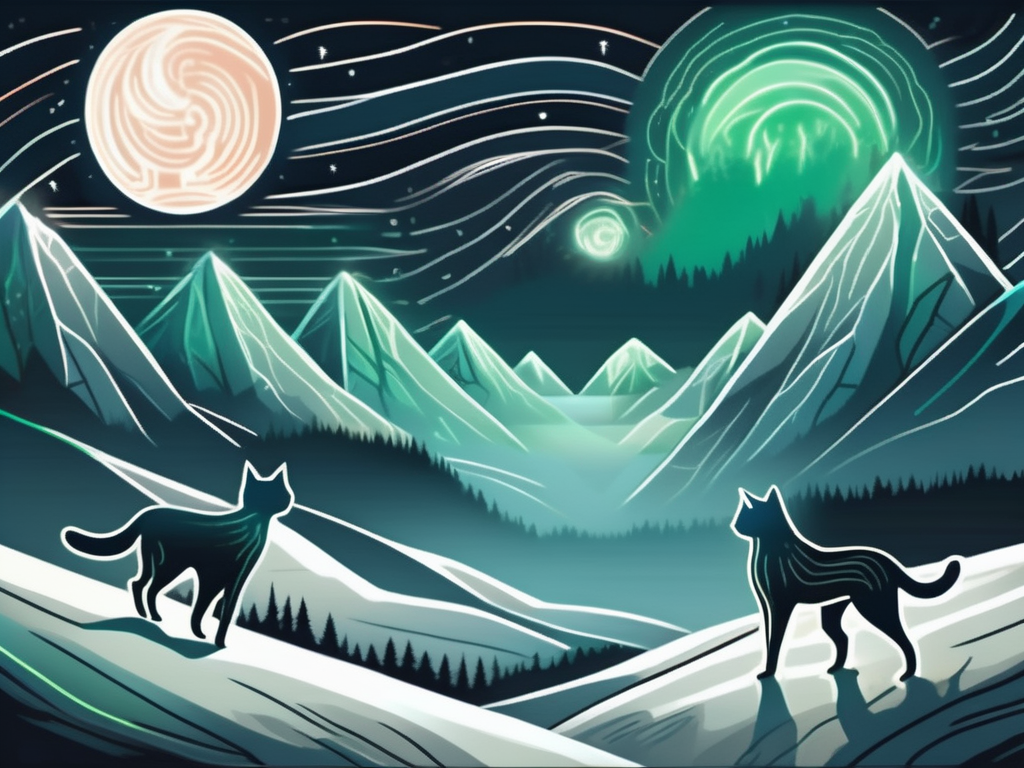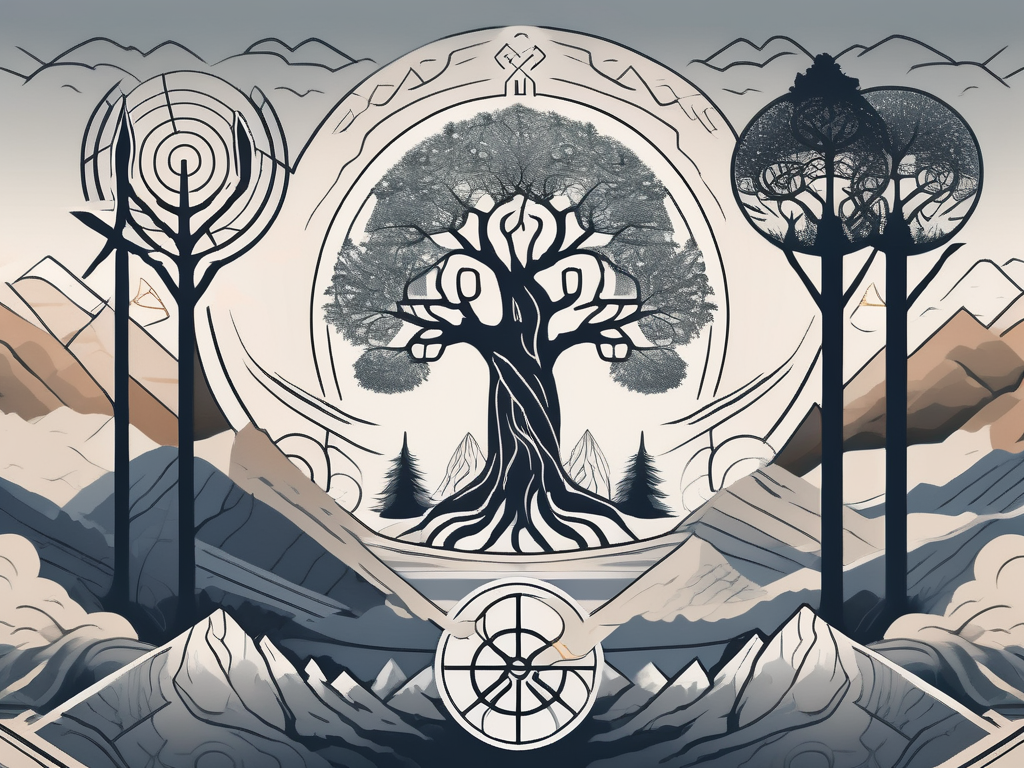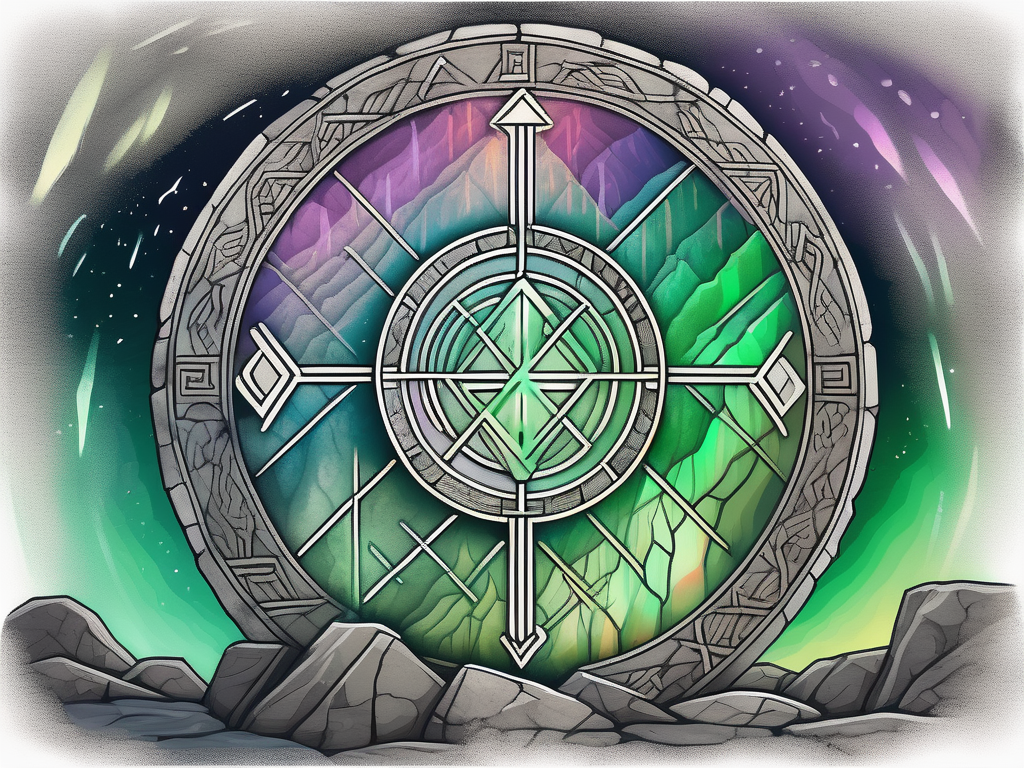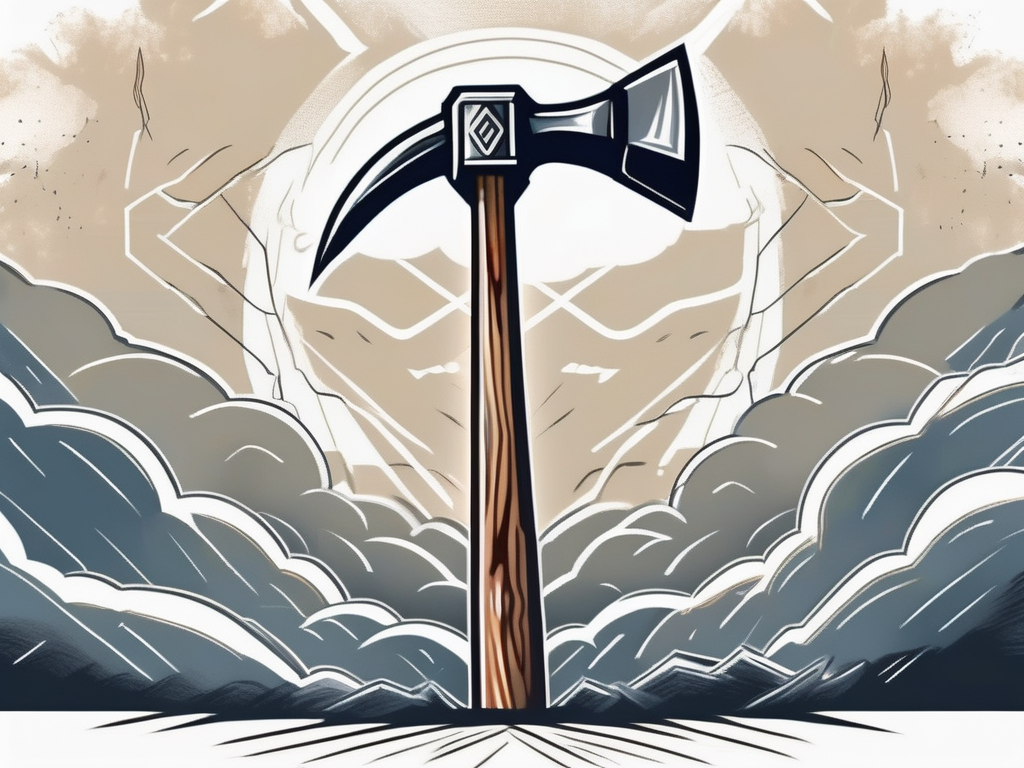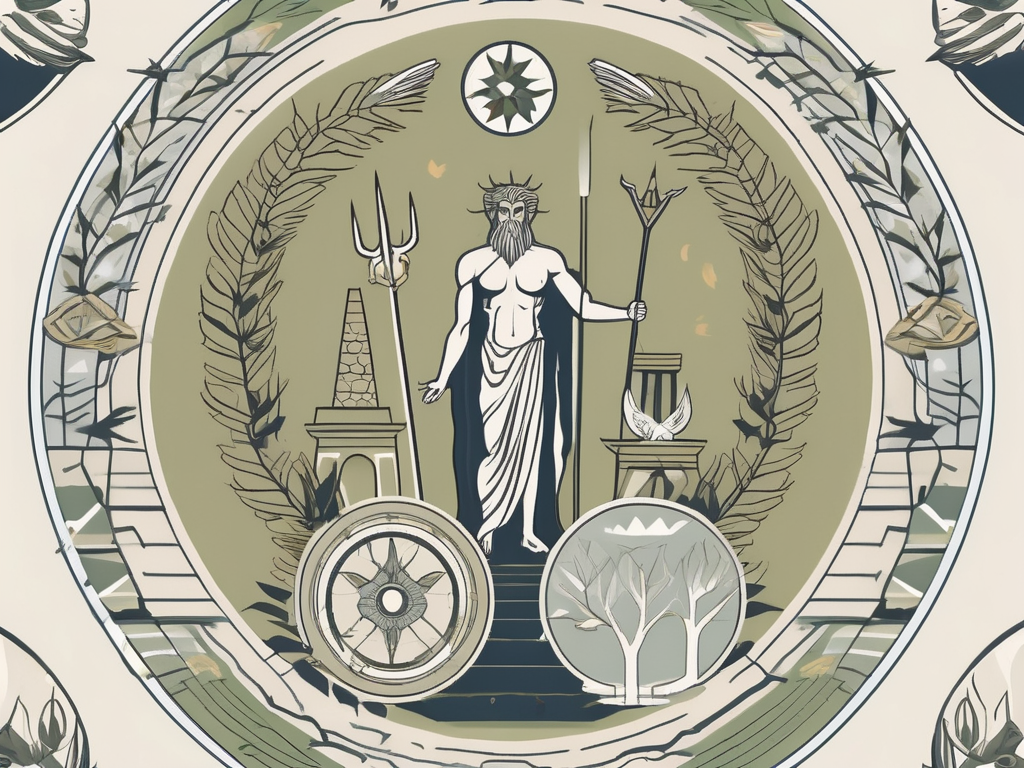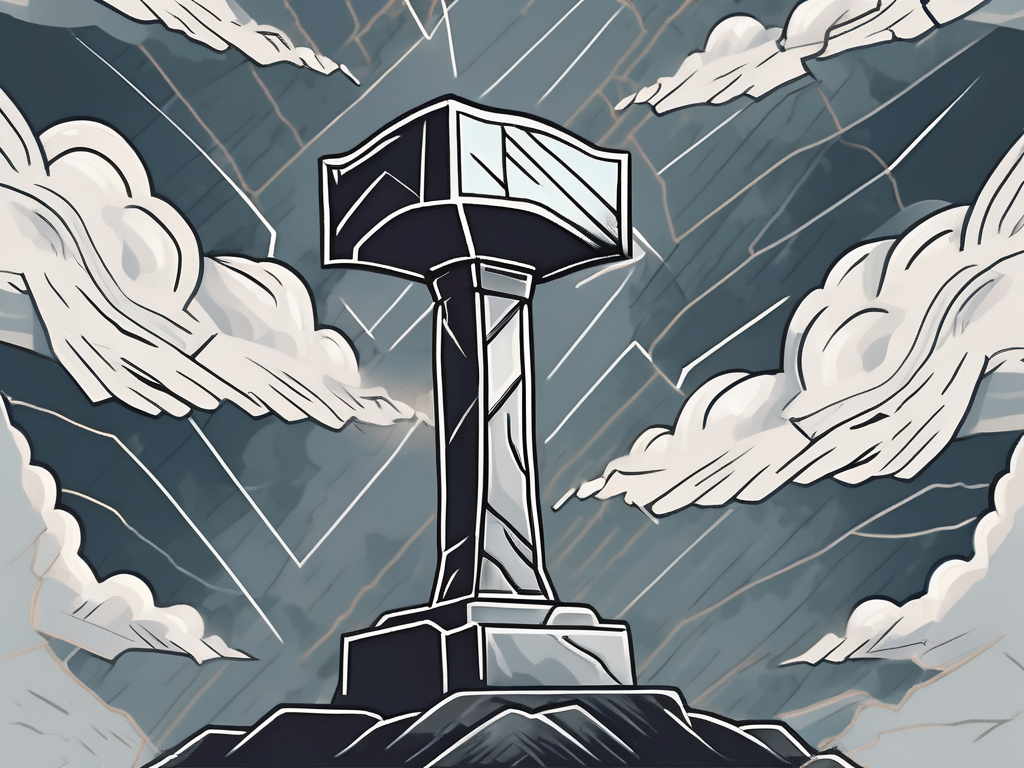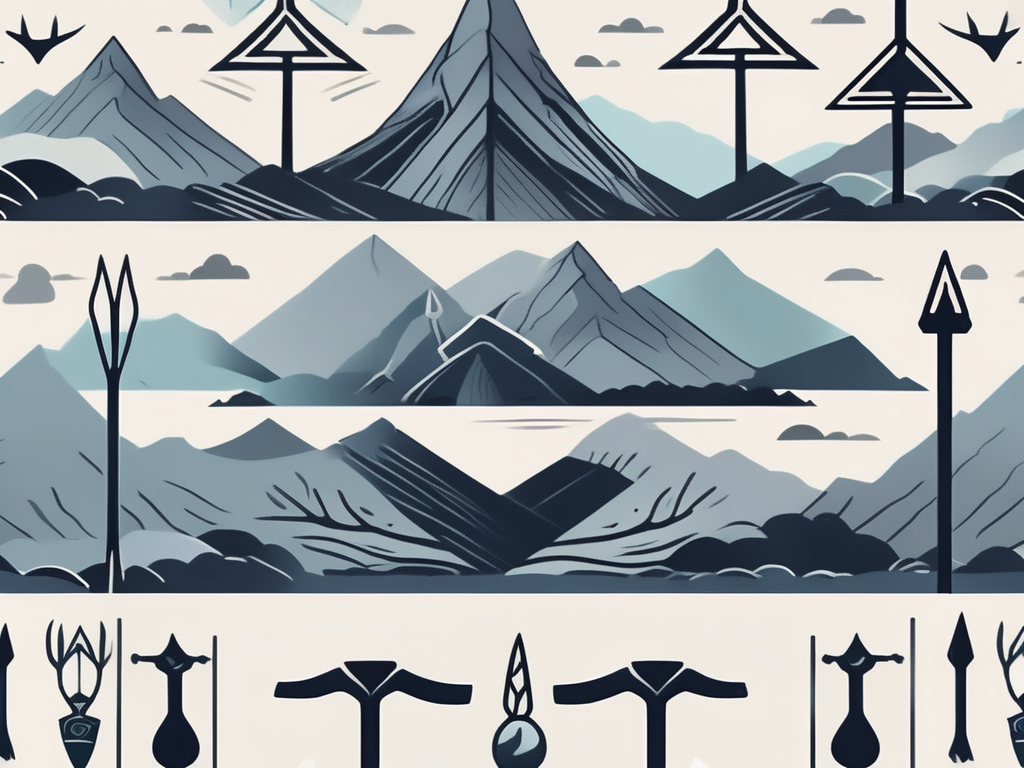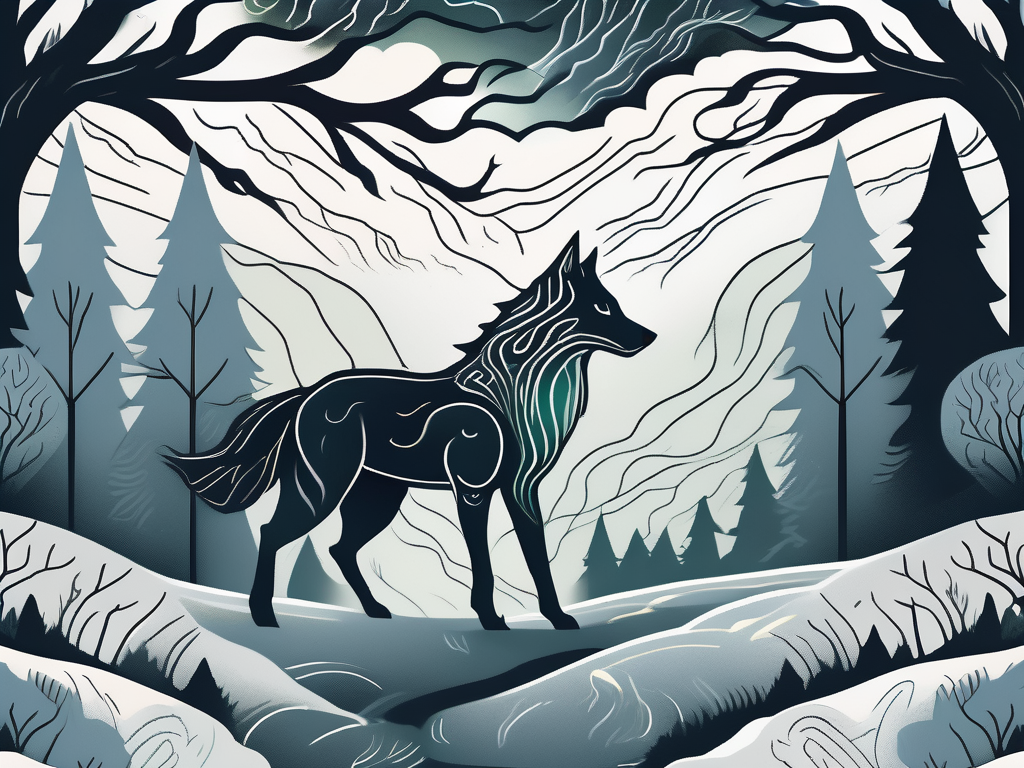The Norse pantheon is a fascinating tapestry of gods and goddesses, each with their own unique powers and influence. Among these divine beings, the goddesses stand out as powerful figures who shape the world and the lives of mortals. In this article, we will explore the role of Norse goddesses, their hierarchy within the pantheon, and the symbols and significance they hold in Norse mythology. We will also delve into their enduring legacy and how they continue to captivate modern society.
Understanding the Norse Pantheon
In Norse mythology, the pantheon consists of various gods and goddesses who govern different aspects of the world. These deities are divided into two main groups, the Aesir and the Vanir. The Aesir are associated with war, wisdom, and leadership, while the Vanir are connected to fertility, nature, and prosperity. It is within this cosmic tapestry that the Norse goddesses find their place.
The Norse goddesses are an integral part of the pantheon, each with her unique qualities and powers. They play essential roles in shaping the world and influencing mortal lives. From love and beauty to wisdom and the harshness of winter, the goddesses are entrusted with a diverse range of responsibilities.
The Role of Goddesses in Norse Mythology
In Norse mythology, goddesses hold positions of great importance and power. They are not merely supporting characters, but rather central figures in the intricate web of Norse mythology. Their presence and actions have a profound impact on the world and the lives of mortals.
One such goddess is Freya, the goddess of love and beauty. She is known for her enchanting allure and her ability to inspire passion in the hearts of both gods and mortals. Freya’s influence extends beyond matters of the heart, as she is also associated with fertility and abundance. It is said that when Freya weeps, her tears turn into gold, symbolizing her connection to wealth and prosperity.
Another prominent goddess is Frigg, the wife of Odin and the queen of the Aesir. Frigg is known for her wisdom and foresight, often consulted by Odin himself for her keen insights. She possesses the ability to see the future, making her an invaluable asset to the pantheon. Frigg’s presence brings stability and order to the Norse cosmos, ensuring the smooth functioning of the world.
The Hierarchy of Norse Deities
Within the Norse pantheon, there is a clear hierarchy among the deities. At the pinnacle stands Odin, the Allfather, renowned for his wisdom and leadership. As the ruler of Asgard, Odin holds immense power and is revered by both gods and mortals alike. His role as the chief deity of the Aesir places him at the center of the cosmic tapestry.
Alongside Odin are powerful gods such as Thor, the god of thunder, and Loki, the trickster god. These gods, with their distinct personalities and abilities, contribute to the dynamic nature of the pantheon. They often engage in epic battles and adventures, shaping the course of Norse mythology.
However, it is important to note that the goddesses also hold positions of prominence within the hierarchy. They are not overshadowed by their male counterparts but rather stand shoulder to shoulder with them, exerting their influence and power. The goddesses’ roles are diverse and far-reaching, ensuring a balance between the masculine and feminine energies within the Norse pantheon.
In conclusion, the Norse goddesses are not mere supporting characters in the pantheon but rather integral figures in Norse mythology. Their unique qualities, powers, and roles contribute to the rich tapestry of the Norse cosmos. From love and beauty to wisdom and foresight, the goddesses bring depth and complexity to the world of Norse mythology.
The Power and Influence of Norse Goddesses
Among the Norse goddesses, three stand out for their exceptional power and influence: Freya, Frigg, and Skadi.
The Norse pantheon is rich with powerful and influential deities, but few can rival the strength and impact of the goddesses. In a world where gods and mortals coexist, these divine beings hold sway over various aspects of life, from matters of the heart to the forces of nature. Let us delve deeper into the lives and powers of three remarkable Norse goddesses: Freya, Frigg, and Skadi.
The Goddess Freya: Love, Beauty, and War
Freya, the goddess of love, beauty, and war, captivates both gods and mortals with her radiant presence. Her enchanting allure is matched only by her prowess as a warrior. In the heat of battle, Freya commands a fearsome chariot pulled by two enchanted cats, instilling fear in the hearts of her enemies. Her influence extends beyond matters of the heart, as she embodies the chaos and grandeur of war. Freya’s power is a testament to the multifaceted nature of femininity, combining love, beauty, and strength in one divine being.
Frigg: The Goddess of Wisdom and Foreknowledge
Frigg, the goddess of wisdom and foreknowledge, possesses a deep insight into the workings of the cosmos. As the wife of Odin, the Allfather, she holds a position of great importance among the gods. Frigg’s wisdom and understanding of the future make her a sought-after advisor, with the gods often seeking her counsel. Her influence is felt in matters of fate and destiny, as she weaves the threads of the universe with her profound knowledge. Frigg stands as a reminder of the vital role wisdom plays in shaping the fabric of existence.
Skadi: The Winter Goddess and Huntress
Skadi, the winter goddess and huntress, embodies the harsh and unforgiving aspects of nature. In the frozen wilderness, she reigns supreme, navigating the treacherous landscape with unparalleled skill in archery and skiing. Skadi’s influence stretches across the icy expanse, reminding mortals of the power and unpredictability of the natural world. Her presence serves as a reminder that even in the harshest of environments, strength and resilience can be found. Skadi’s ferocity and connection to the winter season make her a formidable force to be reckoned with.
As we explore the power and influence of these Norse goddesses, we are reminded of the diverse and complex roles they play in the mythology. From love and beauty to wisdom and war, these deities shape the world in profound ways. Their stories continue to captivate and inspire, reminding us of the enduring power of mythology and the strength of the divine feminine.
The Symbolism and Significance of Norse Goddesses
Beyond their individual powers and influence, Norse goddesses hold rich symbolism and significance within their mythology. These powerful deities represent various aspects of the natural world, human emotions, and societal roles.
One of the most prominent roles of Norse goddesses is their participation in rituals and celebrations. These divine beings play an integral part in Norse religious practices, where they are revered and honored through various ceremonies. These rituals symbolize the deep connection between mortals and the divine, serving as a means of seeking guidance, protection, or fruitful outcomes in the aspects of life influenced by the goddesses.
During these rituals, devotees offer prayers and sacrifices to the goddesses, seeking their favor and blessings. The goddesses, in turn, are believed to bestow their divine powers upon those who show them reverence and devotion. These rituals not only strengthen the bond between mortals and the divine but also create a sense of community and unity among the worshippers.
Moreover, Norse goddesses are not merely symbols of power and divinity; they also embody both strength and femininity. In a society where women were often marginalized, these goddesses challenged societal expectations and norms. Through their stories and myths, they empower and inspire, reminding us of the immense strength and resilience found within women.
For example, the goddess Freyja, known for her beauty and love, is also a fierce warrior who rides into battle with her chariot pulled by two giant cats. She represents the duality of femininity, showing that women can be both nurturing and fierce protectors.
Similarly, the goddess Sif, known for her golden hair, is not just a symbol of beauty but also a representation of fertility and abundance. Her role as a wife and mother highlights the importance of women in Norse society and their ability to bring life and prosperity.
Overall, Norse goddesses hold immense symbolism and significance within their mythology. They are not only revered and honored through rituals and celebrations but also serve as powerful symbols of strength and femininity. Their stories continue to inspire and empower, reminding us of the diverse roles women can play in society.
The Legacy of Norse Goddesses
The influence of Norse goddesses extends far beyond the pages of mythology, permeating modern pop culture and society.
Norse Goddesses in Modern Pop Culture
Norse goddesses continue to inspire and captivate audiences in various forms of media. From movies to video games, their stories are reimagined and celebrated, introducing a new generation to the power and allure of these mythical figures.
The Enduring Influence of Norse Goddesses in Contemporary Society
Even outside the realm of entertainment, Norse goddesses leave an indelible mark on contemporary society. Their symbols and imagery can be seen in fashion, artwork, and even spiritual practices. The enduring influence of these goddesses speaks to their timeless power and the fascination they continue to evoke.
In conclusion, the mighty Norse goddesses hold a significant place within the vast tapestry of Norse mythology. Their power and influence shape the world and the lives of mortals. From their roles within the pantheon to their symbolism and enduring legacy, these goddesses continue to inspire and captivate. Through their stories, we are reminded of the strength and beauty that lies within us all.
